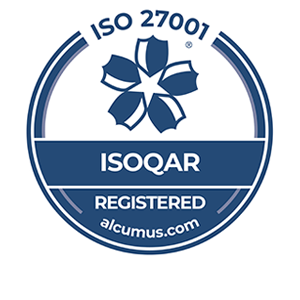Understanding the difference between qualitative and quantitative research is fundamental to running a successful research project. The terms underpin the two key approaches to research. Both have significant value that contributes to social, psychological, natural and business disciplines – but wildly different applications. So, what exactly is the difference?
Qualitative research is an exploratory method of enquiry. It sets out to research underlying causes, emotions and values prior to a hypothesis being developed. The goal of qualitative studies is to discover and explain why a phenomenon or behaviour occurs. Methods are focused on improving the depth of knowledge around a subject, using semi and non-structured questioning to allow for a freeform, responsive dialogue. Sample sizes are typically small as the volume of data gathered from each research participant is large.
Quantitative Research is a systematic, investigative method of research. It is data led in approach, designed to answer a specific research question. Quantitative studies gather numerical, statistical data to support or refute these previously held hypotheses. Both research methods and analysis are structured to draw descriptive conclusions that are able to recommend a suitable course of action. Sample sizes need to be large in order to generalise results to the entire target population.
Qualitative Research Methods
There are a wide range of qualitative research methods, each designed to generate a different form of insight. The following methods are the most popular qualitative research approaches:
Ethnography is the systematic, deliberate studies of culture and context. Ethnographic studies involve closely following the research subject in an effort to understand the world through their lense. They are observational in nature, aiming to detail consumers in their natural setting. Understanding is developed by comparing observations with the cultural frame and analysis of supporting context. Insights can be drawn from both the experience of the immersed ethnographer and of the research subject.
In-Depth Interviews are the original deep dives. In-depth interviews (or IDIs for short) are a form of intensive interview that rely on un-structured questions and / or projective techniques to explore a particular topic. Successful interviews take the form of guided conversations and hinge on the skill of the interviewer to uncover new insights.
Focus Groups are rooted in social research, but have grown far beyond this scope. They are group based interviews, typically consisting of 6 – 10 participants. Research subjects are asked for their opinions, perceptions and beliefs around a central topic. Answers are used to form the basis of further discussion, so that a range of in-depth, contrasting answers can be collected. Structured, collaborative tasks enhance the social group dynamic and a range of stimuli is vital to prompting accurate responses.
Diary Studies are a longitudinal, self-reported research method which aim to capture in-situ insights from consumer experiences. Participants are asked to keep a record of their activities, alongside further information regarding their thoughts, feelings and decision making processes. Results from individual diaries are compared to identify common themes, prompt later reflective discussions or extract in-the-moment feedback.
Research Communities, also known as MROCs (Market Research Online Communities, are closed groups of individuals that share a common interest. The primary purpose of a research community is to gather in-depth, qualitative information that provides the basis for new ideas, innovations and ways of tackling a problem. Community engagement is vital to a successful MROC. The best research communities evolve discussions naturally and only require moderator input when a new topic is introduced.
Quantitative Research Methods
Quantitative research methods are focused on producing statistically significant results which can be used to guide the decision making process. Because of this, the range of methods which can be used to gather quantitative research is more limited. However, each is still a valuable resource.
Surveys are a quantitative data collection mechanism that focus on gaining insight into one pre-defined topic. Surveys can be conducted face-to-face, over the telephone, via paper, online or by mobile. For survey results to accurately analysed, they must be administered to a large sample that is representative of the target population. Closed questions are most common, as they enable later data analysis.
Panels are large pools of respondents which are considered to be research ready. Panels of respondents are asked to take part in multiple research tasks. These tasks are primarily quantitative in nature. Panels can be differentiated from third party sample by their members’ interests, which have an element of commonality. Employee, customer and member panels are the most frequently used examples.
Community Panels are an extension of both the community and panel research methods. In a community panel, a large volume of participants are held. This group answer panel-level surveys. However, multiple communities (or projects) can exist within the panel – allowing it to be segmented by interest or role. These smaller communities can be used to complete smaller scale quantitative tasks, or as traditional communities.
Qual vs. Quant: A Summary
| Qualitative Research | Quantitative Research | |
| Primary Use | Discover new opportunities, trends and behaviours. | Provide recommendations and aid decision making process. |
| Objective | To explore attitudes and opinions to form new theories. | To test previously held hypotheses and theories. |
| Sample Size | Small – non-representative of target population. | Large – in order to generalise to entire target population. |
| Methodologies | Ethnographies, in-depth interviews, focus groups, diaries and communities. | Surveys, panels and community panels. |
| Analysis | Unstructured, network and linkage based conclusions. | Structured, numerical tests that seek statistical significance. |
| Reporting | Coherent, story based narratives. | Charts, tables and data visualizations. |
We believe the best insight comes from combining a qualitative and quantitative approach. Representative data must be balanced with human insight and vice versa. Our experts are skilled at blending the two to create compelling research which drives action and improves business performance. Do you believe a combined approach is best, or do you favour one approach? Let us know in the comments below and join the conversation.

















